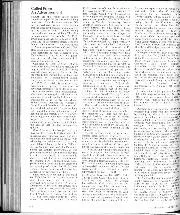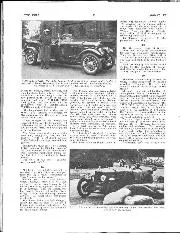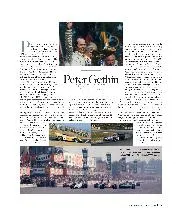SPRING RESPONSIBILITIES: A Plea for their Recognition. By A. MILNER.
HOW few motorists, experienced and otherwise,
realise exactly what depends on the road springs of a car, the strains they are called ul)on to bear, up, down, side and end thrusts, shocks of every description, the varying loads they have to carry, and still actuate uniformly in all conditions. I would not for one moment attempt to say how this is achieved, or endeavour to compare one type of springing with another, for this is the sphere of the car designer and the spring manufacturer. My object in writing these notes is to bring to the notice of the casual motorist the necessity of keeping the springs of his car in good condition.
Springs are always on duty, whether the car is moving or stationary, and they are always bearing some load. Think of yourself being in a state of tension, without a moment’s respite, and what the result would be— absolute fatigue and a breakdown. It is just the same with springs. They need rest, just as much care as a human being, and it is quite an easy matter to take the strain away when your car is standing for a week or so by jacking the car up from the underside of the chassis frame.
The next thing is to keep the springs in a clean and good condition—in other words, “fit.” No moving part of a car is so exposed as the springs ; they get all the worst of the mud and dust from the road, not only on their surfaces, but between the leaves. Irritating squeaks arise, and that air-cushion feeling that one appreciated so much when the car was new disappears. The springs are blamed, and it isn’t really their fault, it is due to the lack of attention. I venture to say—and it is a good deal more than a venturesome statement— that if the springs and the shackle bearings received half the attention paid to other parts of the car, the original comfort would be maintained, and notable economy would be effected in tyre and general repair bills, to say nothing of that security one instinctively feels when the springs of the car are operating properly.
If motorists in general would realise that bound and rusty springs are the cause not only of broken leaves, but of dangerous skids, more attention would be paid to maintaining these important members of the car’s anatomy in better condition. Bear in mind that the duty of a spring is to absorb shock after shock, for no other part of the car can relieve or help in the slightest degree, and the springs must absorb shocks in such a fashion as to protect the passengers and the more delicate mechanism of the car. The strength of the springs must be such as to carry all the weight they are designed to bear ; at the same time it must be supple enough to function at the slightest inequality in the road surface, and with the varying loads that are imposed upon all cars.
It will be realised, therefore, that the spring manufacturer’s job is no sinecure ; he and the designers of the car attend to the constructional and theoretical part of the business, and, when new, the springs provide perfect suspension in 99 cases out of ioo ; but it is up to you, Mr. Motor Owner, to back up their efforts by keeping the springs in the condition in which they were supplied to you.
There are many ways of doing this—easy and difficult, messy and clean—but the simplest and most effective is the employment of a good spring gaiter, which not only protects the springs from the effects of bad weather, but provides the means for furnishing the whole surface of the spring leaves with a film of oil.
The question as to whether the spring requires lubrication has been the subject of much discussion, but let me say, from numerous observations, that there is nothing better to preserve the condition of the springs than a film of oil between the leaves ; it is a certain rust protector, and prevents squeaks. However, my main plea is, if you value your comfort and the well-being of your car, “Take the utmost care of your springs.”





